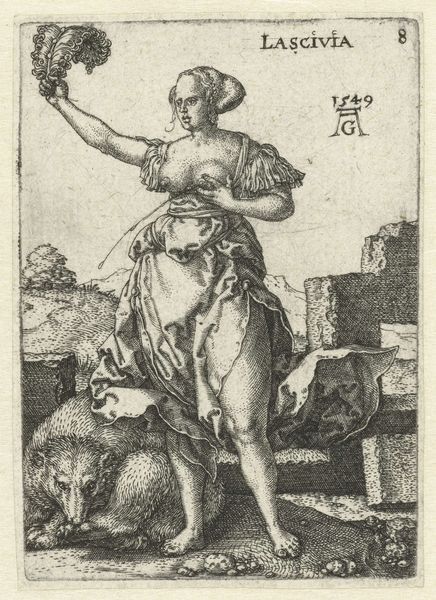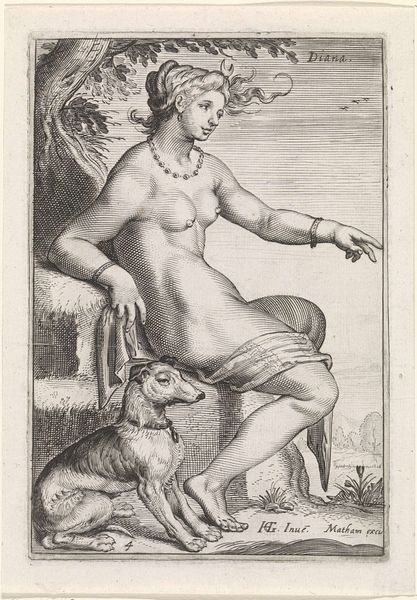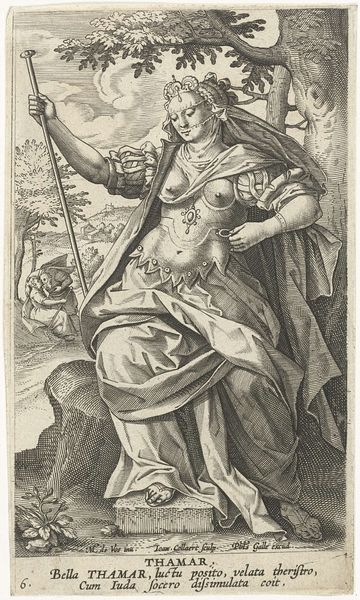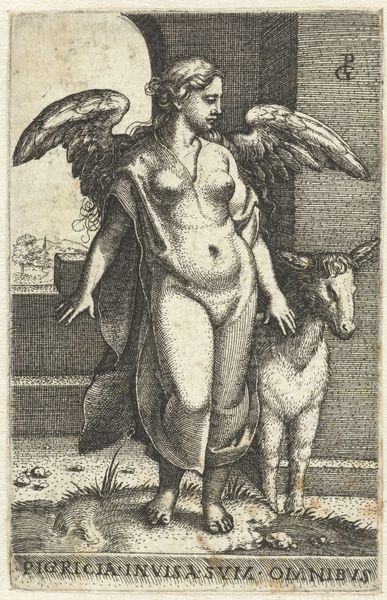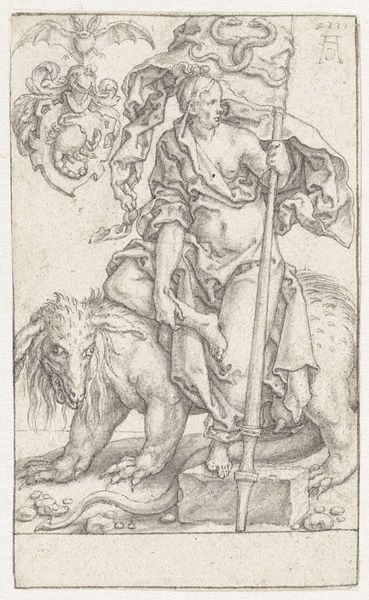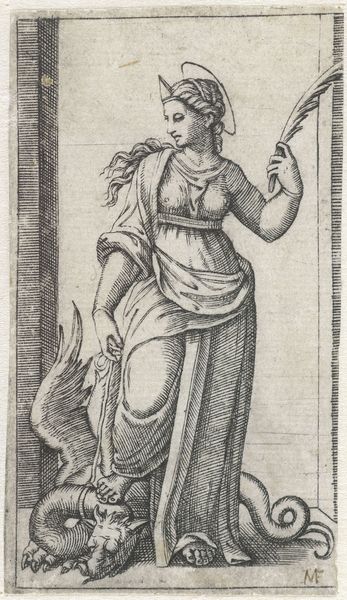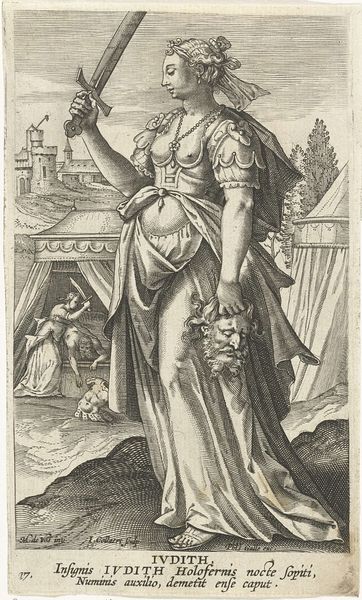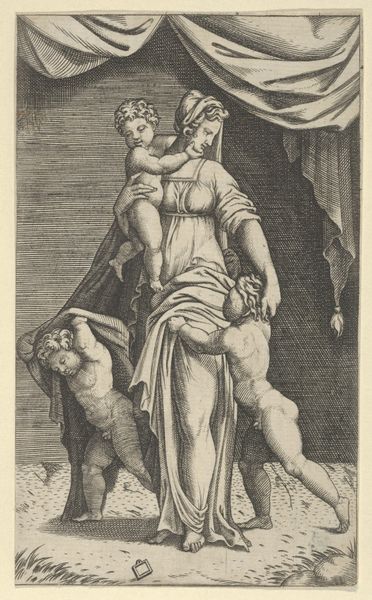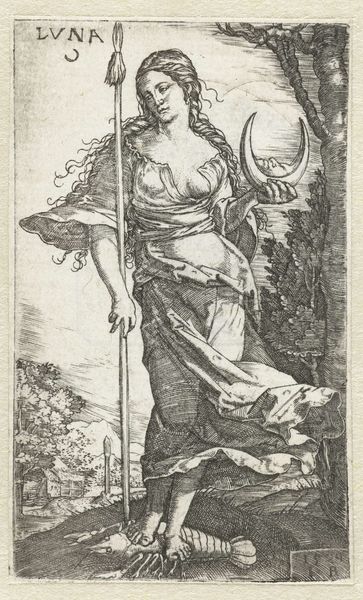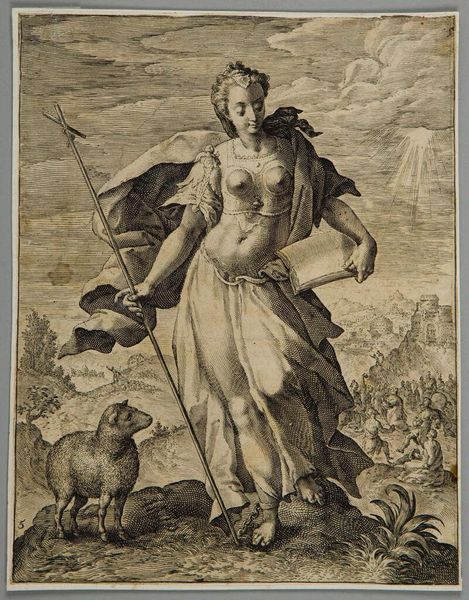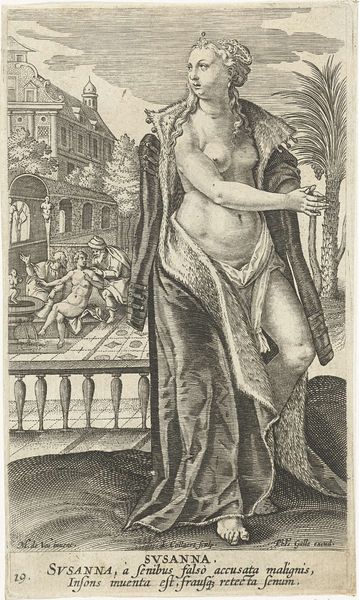
Dimensions: height 85 mm, width 54 mm
Copyright: Rijks Museum: Open Domain
Georg Pencz made this small engraving titled "Toorn (Ira)" at an unknown date in the 16th century. The winged figure is an allegorical representation of wrath or anger. The text at the bottom, "Ira furor brevis sum," translates to "I am brief madness." In 16th century Germany, where Pencz worked, the Reformation was challenging long-held religious and social norms. This image of wrath may reflect anxieties about maintaining order in a time of upheaval. The figure is armed like a warrior, but also winged like an angel, suggesting the contradictory nature of anger, perhaps as both a destructive and a righteous force. Note the wolf at her side, a symbol of wildness and aggression. To understand this image better, we can look at period books, pamphlets, and other printed images that circulated at the time. By understanding the social, religious, and intellectual context, we can gain a deeper appreciation for the role art played in shaping public opinion during this period.
Comments
No comments
Be the first to comment and join the conversation on the ultimate creative platform.
